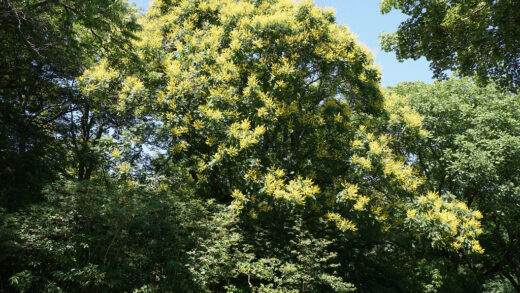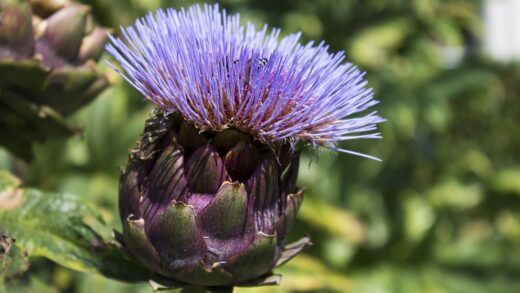Successful bean cultivation is a rewarding endeavor for any gardener, providing a bountiful harvest of nutritious pods or seeds. Achieving optimal growth and yield hinges on a comprehensive understanding of the plant’s life cycle and its specific environmental needs. From initial soil preparation to ongoing maintenance throughout the growing season, a series of thoughtful practices must be implemented. This includes providing adequate support for climbing varieties, managing water and nutrient levels effectively, and creating a favorable microclimate that encourages vigorous development. By mastering these fundamental aspects of bean care, growers can ensure their plants not only survive but truly thrive, leading to a productive and satisfying agricultural outcome.
The foundation of any successful bean crop is the selection of an appropriate growing site and the meticulous preparation of the soil. Beans require a location that receives at least six to eight hours of direct sunlight per day, as this is crucial for photosynthesis and energy production, which directly impacts pod and seed development. The chosen site should also have good air circulation to help prevent the onset of fungal diseases, which can proliferate in stagnant, humid conditions. Furthermore, it is wise to select a plot that has not been used for growing legumes in the past two to three years to avoid the buildup of soil-borne pathogens specific to the bean family.
Once the ideal location is identified, attention must turn to the soil itself. Beans prefer a well-drained, loamy soil with a slightly acidic to neutral pH, ideally between 6.0 and 7.0. Heavy clay soils can become waterlogged, leading to root rot, while overly sandy soils may not retain sufficient moisture and nutrients. To improve soil structure, incorporate generous amounts of organic matter, such as compost or well-rotted manure, which enhances drainage in heavy soils and improves water retention in sandy ones. This amendment also enriches the soil with essential microorganisms and slow-release nutrients, creating a fertile environment for the plants.
Before planting, the soil should be tilled or dug to a depth of at least 20-25 centimeters to loosen it, allowing for easy root penetration and establishment. This process helps to break up compacted layers, improves aeration, and facilitates the even distribution of water and nutrients throughout the root zone. A final raking to create a fine, smooth seedbed will ensure good seed-to-soil contact, which is vital for uniform germination. It is also at this stage that any necessary pH adjustments should be made, based on a soil test, by adding lime to raise the pH or sulfur to lower it.
Ongoing maintenance during the growing season
Once the bean seedlings have emerged and established themselves, consistent care throughout the growing season is paramount for a healthy and productive crop. Regular weeding is one of the most critical tasks, as weeds compete with the bean plants for essential resources such as water, nutrients, and sunlight. This competition can significantly stunt growth and reduce yields. It is best to weed when the soil is moist, which makes pulling them easier, and to do so carefully to avoid disturbing the shallow root systems of the young bean plants. Applying a layer of organic mulch, such as straw or shredded leaves, can effectively suppress weed growth while also helping to conserve soil moisture.
More articles on this topic
Watering practices must be adapted to the plant’s needs as it progresses through different growth stages. While beans require consistent moisture, overwatering can be just as detrimental as underwatering, leading to root diseases and poor aeration. The most critical periods for water are during flowering and pod development, as water stress at these times can cause flowers to drop and pods to be small or malformed. A general guideline is to provide about 2.5 centimeters of water per week, either from rainfall or irrigation, ensuring the soil is moistened to a depth of at least 15 centimeters. It is best to water at the base of the plants in the morning to allow foliage to dry quickly, minimizing the risk of disease.
As the bean plants grow, especially bush varieties, they can become quite dense. Thinning the seedlings may be necessary to ensure proper spacing, which is typically 10-15 centimeters apart for bush beans. This spacing allows for adequate air circulation around each plant, which is crucial for reducing the incidence of fungal diseases like powdery mildew and rust that thrive in damp, crowded conditions. Good airflow also ensures that all parts of the plant receive sufficient sunlight, promoting even growth and ripening of the pods.
Finally, regular observation of the plants is key to early detection of any potential problems. Inspecting the leaves, stems, and developing pods for signs of pests or diseases allows for prompt intervention before an infestation or infection becomes widespread. Look for discoloration, spots, holes in the leaves, or the presence of insects like aphids or bean beetles. Early action, whether through manual removal of pests, application of organic insecticides, or treatment for diseases, can make the difference between a minor issue and a crop failure, ensuring the plants remain healthy and productive until harvest.
Support systems for pole beans
Climbing or pole bean varieties offer the advantage of high yields in a small footprint, but they require a sturdy support structure to grow vertically. Providing this support is not merely for organization; it is essential for the health and productivity of the plants. Trellises, teepees, or simple pole structures allow the vines to climb towards the sunlight, ensuring that leaves receive maximum light exposure for photosynthesis. This vertical growth also improves air circulation throughout the plant canopy, which is a critical factor in preventing the development of fungal diseases that can decimate a crop in humid conditions. Without proper support, the vines would sprawl along the ground, leading to tangled plants, shaded leaves, and pods that are susceptible to rot and pest damage from soil contact.
There are numerous effective and aesthetically pleasing ways to construct supports for pole beans. One of the most common methods is the teepee, created by tying together three or four long poles or bamboo canes at the top and spreading the legs to form a stable cone. This structure is robust and can withstand wind, and beans can be planted around the base of each pole. Another popular option is a trellis, which can be made from wood, metal, or plastic netting stretched between two sturdy posts. A-frame trellises are particularly efficient, allowing beans to be grown on both sides and providing easy access for harvesting from the open space underneath. The choice of structure often depends on available materials, garden space, and personal preference.
The timing of the support installation is a crucial detail for success. It is highly recommended to set up the trellis or pole structure at the same time as or shortly after sowing the seeds. Installing the support system later, after the seedlings have emerged and begun to grow, carries a significant risk of damaging the delicate root systems that spread out from the base of the plant. Once the young vines begin to develop their first true leaves and tendrils, they will actively seek something to climb. If the support is already in place, they will naturally find and attach to it, but it is often necessary to gently guide the initial vines onto the structure to get them started in the right direction.
Throughout the growing season, it is important to continue managing the growth of the vines on their supports. While pole beans are natural climbers, they can sometimes become tangled or grow too densely in one area. Periodically guiding the vines to spread them out more evenly across the structure can help to maximize light exposure for all leaves and improve air circulation even further. This gentle training ensures that the plant’s energy is directed towards producing a healthy, abundant crop of beans rather than a dense, unproductive mass of foliage. This simple act of management contributes significantly to the overall health of the plant and the quality of the harvest.
Managing environmental factors
Beyond the direct care provided by the gardener, the surrounding environmental conditions play a significant role in the successful cultivation of beans. Temperature is a primary factor, as beans are a warm-season crop that is highly sensitive to frost. Seeds will not germinate properly in cold soil, and a late spring frost can easily kill young seedlings. The ideal soil temperature for germination is between 21°C and 27°C. Similarly, mature plants can be damaged by excessively high temperatures, especially during the flowering stage, where temperatures above 32°C can cause “blossom drop,” a condition where the flowers fall off without setting pods, leading to a significant reduction in yield.
Humidity levels also have a profound impact on bean health, primarily concerning disease pressure. High humidity creates an ideal environment for the proliferation of fungal and bacterial diseases, such as white mold, rust, and bacterial blight. While it is impossible to control the ambient humidity, cultural practices can mitigate its effects. Ensuring proper plant spacing to promote air circulation, watering at the base of the plants to keep foliage dry, and avoiding working among wet plants can all help to reduce the risk of disease outbreaks. In regions with consistently high humidity, selecting disease-resistant bean varieties can be a particularly effective strategy.
Wind can be another environmental challenge, particularly for tall pole bean varieties. Strong winds can damage leaves, break stems, and even topple support structures if they are not securely anchored. This physical damage stresses the plants and can create entry points for diseases. To mitigate wind damage, consider planting beans in a more sheltered location, such as near a fence, wall, or a row of taller plants like corn or sunflowers that can act as a natural windbreak. Ensuring that trellises and other supports are well-constructed and deeply set into the ground is also essential for stability in windy conditions.
Sunlight, as previously mentioned, is a critical resource, but its quality and duration can vary. While beans require full sun, intense, direct sunlight during periods of extreme heat can sometimes lead to sunscald on pods and leaves. In very hot climates, providing some afternoon shade, perhaps with a temporary shade cloth, can help protect the plants during the hottest part of theday. Understanding these local environmental nuances and implementing strategies to moderate their extremes is a hallmark of advanced gardening and is key to consistently achieving a successful bean harvest year after year.
Harvesting for optimal quality
The timing and method of harvesting beans are crucial for ensuring the best possible flavor, texture, and nutritional value. The ideal harvest time depends on the type of bean and its intended use. For snap beans, also known as green or string beans, the pods should be picked when they are young and tender, typically just before the seeds inside begin to swell and create noticeable bumps on the pod. They should be firm and “snap” cleanly when bent. If left on the plant for too long, the pods will become tough, fibrous, and less palatable. Frequent harvesting, at least every other day, is essential once the plants begin producing.
Regularly picking the beans serves another important purpose: it encourages the plant to continue producing more pods. This principle, known as “deadheading” in flowering plants, applies to fruiting vegetables as well. By removing the mature pods, the plant’s energy is redirected from seed maturation to the production of new flowers and, subsequently, more beans. This can significantly extend the harvest period, especially for indeterminate or pole bean varieties, which are capable of producing pods over several weeks or even months. Allowing pods to fully mature and dry on the vine signals to the plant that its reproductive cycle is complete, and it will slow or stop new production.
The physical act of harvesting should be done with care to avoid damaging the plant. Instead of simply pulling the pods off, which can break branches or even uproot the plant, it is best to use two hands. Hold the stem steady with one hand and gently pull the pod off with the other, using a slight twisting motion. Alternatively, using a pair of scissors or small pruning shears provides a clean cut and is the safest method to prevent any harm to the plant’s delicate stems and remaining flowers. This careful approach ensures that the plant remains healthy and continues its productive cycle.
For beans that are grown for their dry seeds, such as kidney beans or black beans, the harvesting process is different. These beans should be left on the plant until the pods have turned brown, brittle, and have dried out completely. One can often hear the seeds rattling inside the pods when they are ready. At this point, the entire plant can be pulled up and hung in a dry, well-ventilated area to finish curing for another week or two before shelling. Proper harvesting techniques, tailored to the specific type of bean, are the final step in realizing the full potential of a well-tended crop.
Post-harvest handling and storage
After the beans are carefully harvested, proper post-harvest handling is essential to preserve their quality, whether they are intended for immediate consumption or long-term storage. For fresh snap beans, the goal is to maintain their crispness and nutritional content. They should be cooled as quickly as possible after picking, especially if harvested on a hot day, to remove field heat and slow down respiration. Placing them in a shady spot or moving them indoors immediately is a good first step. For best results, fresh beans should not be washed until just before use, as excess moisture can promote mold and spoilage during storage.
When storing fresh green beans, refrigeration is key. They can be placed in a perforated plastic bag or a container with some ventilation and stored in the crisper drawer of the refrigerator. This environment helps to maintain high humidity while allowing for some air exchange, which keeps the beans from drying out or becoming slimy. Stored in this manner, fresh beans will typically maintain their quality for about a week. For longer preservation, fresh beans are excellent candidates for freezing, canning, or pickling, each method locking in the flavor and nutrients of the peak-season harvest for enjoyment months later.
For dry beans, the post-harvest process focuses on shelling and ensuring they are completely dry for storage. Once the pods are brittle and fully cured, the shelling process can begin. This can be done by hand, breaking open each pod to remove the seeds, or by placing the pods in a burlap sack and gently threshing them by stepping or rolling on the bag to release the seeds. After shelling, the beans should be cleaned by winnowing, which involves pouring them from one container to another in front of a gentle breeze or fan to blow away the lighter chaff and debris.
The final and most critical step for dry beans is to ensure they have the correct moisture content for long-term storage, which should be around 10-12%. If they are not dry enough, they will be susceptible to mold and insect infestation. To test for dryness, a simple method is the hammer test: if a bean shatters when struck with a hammer, it is sufficiently dry. Once confirmed, the dry beans should be stored in airtight containers, such as glass jars or food-grade buckets, and kept in a cool, dark, and dry place. Properly stored, dry beans can maintain their quality and viability for several years, providing a stable food source long after the growing season has ended.




















